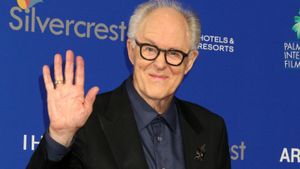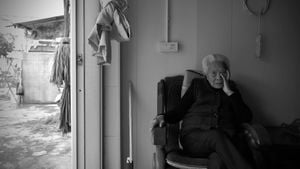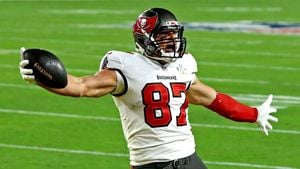Montreal is becoming the focus for French hip-hop artists seeking to break ground on the North American market, acting as a significant incubator for French rap. The rich cultural fabric and linguistic ties provide the perfect gateway for these artists to expand their reach beyond European borders. Prominent figures from the industry, such as manager Hypno from Cult Nation, highlight the transformative potential of Montreal, stating, "Montreal is home to so many talented artists making a name for themselves... and they already have strong potential in the French market."
With hip-hop reigning as the dominant genre across the United States, French rappers are recognizing Quebec's strategic advantage. Artists like Niska, Ninho, Hamza, and Damso, along with promising talents such as Zamdane and RSKO, are performing at major venues across the city, marking the growing presence of French rap on this continent. Festivals like Les Francos de Montréal and the Festival d’été de Québec offer platforms for these artists, allowing them to tap directly int o the local and broader North American audiences.
The exposure gained from performing at these notable festivals is invaluable. Ugo Margolis, associated with rapper 8ruki, points out, "There’s a dual interest in touring internationally. First, for French-speaking artists, performing abroad allows them to connect with Francophone audiences outside of France—like playing in Belgium or Switzerland. It’s about maximizing reach and impact." The blending of cultures and musical styles is significantly enriching the scene and inviting collaborations across borders.
Despite the allure, the challenge remains for these artists to forge genuine connections with Quebec audiences. Margolis emphasizes the necessity of establishing local ties, saying, "To conquer the Quebec audience, artists must establish a strong local connection; otherwise, Montreal might not welcome them with open arms." This sentiment echoes through the experiences of various artists who, even if they sell out shows, need to penetrate the community more meaningfully to uplift their careers.
Marie Lebrun, who acts as talent buyer for the local Courage/Multicolore, has noted a shift in audience engagement with French rap and indicates its growing popularity. "Rap is the number one genre in France today and is deeply embedded in pop culture. Montreal, being the largest Francophone city in America, plays a major role in spreading the genre and influencing the broader Francophone world." Her observations underline the diverse demographics within Montreal's audiences who resonate with French rap, bringing together second and third-generation immigrants from various backgrounds.
The growing interest paves the way for fruitful collaborations between established Quebec artists and their French counterparts. The vibrant music scene is seen as increasingly interconnected and collaborative, largely influenced by the creative scene around Montreal. "There are many collaborations between Quebec and French artists, especially among beat makers," explains Lebrun, highlighting how this connection enriches both territories.
Further, the nuance of performing across the Atlantic nurtures local pride, where local audiences feel connected to global movements. Jeremy Taltaud, president of the Garçon Joueur label and manager for DJ Urumi, describes what he calls the "ping-pong effect." He states, "The artist generates legitimacy by touring internationally, enhancing their own profile at home. There’s also something inherently powerful about connecting through music, no matter the language barrier.”
This challenge of crossing language barriers remains, especially when U.S. audiences primarily consume music sung in English. Despite this, many French artists today are influenced deeply by American rap culture, integrating elements of hip-hop styles from the U.S. Margolis mentions OsamaSon and Young Thug as examples of artists bridging the contemporary sound. "The production style can create connections, allowing us to reach unlikely audiences," he notes.
Many artists are adjusting their styles to align more closely with American hip-hop, fostering familiarity and relevance. Zola’s music reflects this trend, often infusing American stylistic elements even with French lyrics. His 2024 collaboration with American rapper Lil Tjay on the song "Everyday" showcases this fusion of styles, establishing rapport across cultures and languages.
On the whole, the developments of French rap's evolution represent more than just cultural exchange; they capture the aspirations of diverse artists aiming for international recognition. Quebec's commitment to fostering this cross-pollination is evident, confirming its place as not just the cornerstone of the local scene but also as the launching pad for French rap artists aspiring to break through North America. The collective efforts of industry insiders, audiences, and artists alike herald the rise of French rap as it seeks to carve out its niche on the larger international scene.



